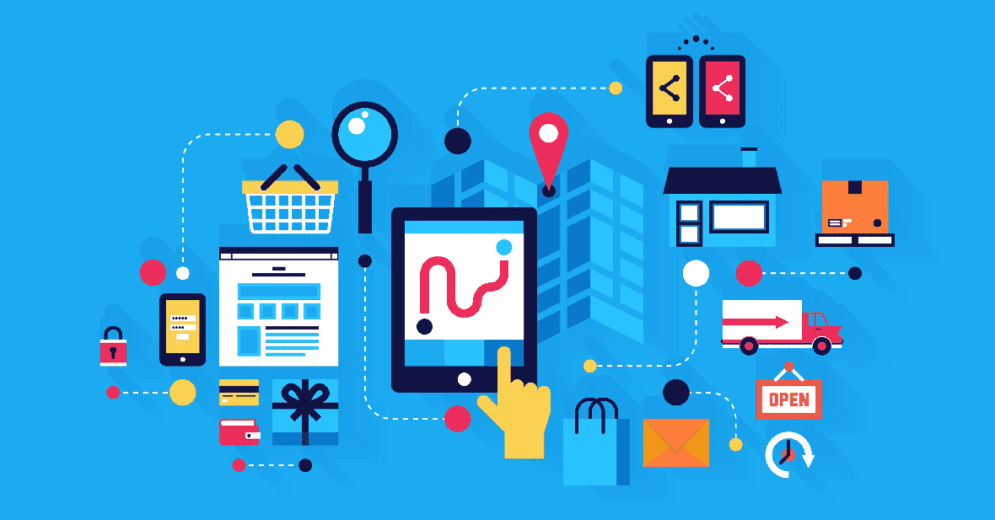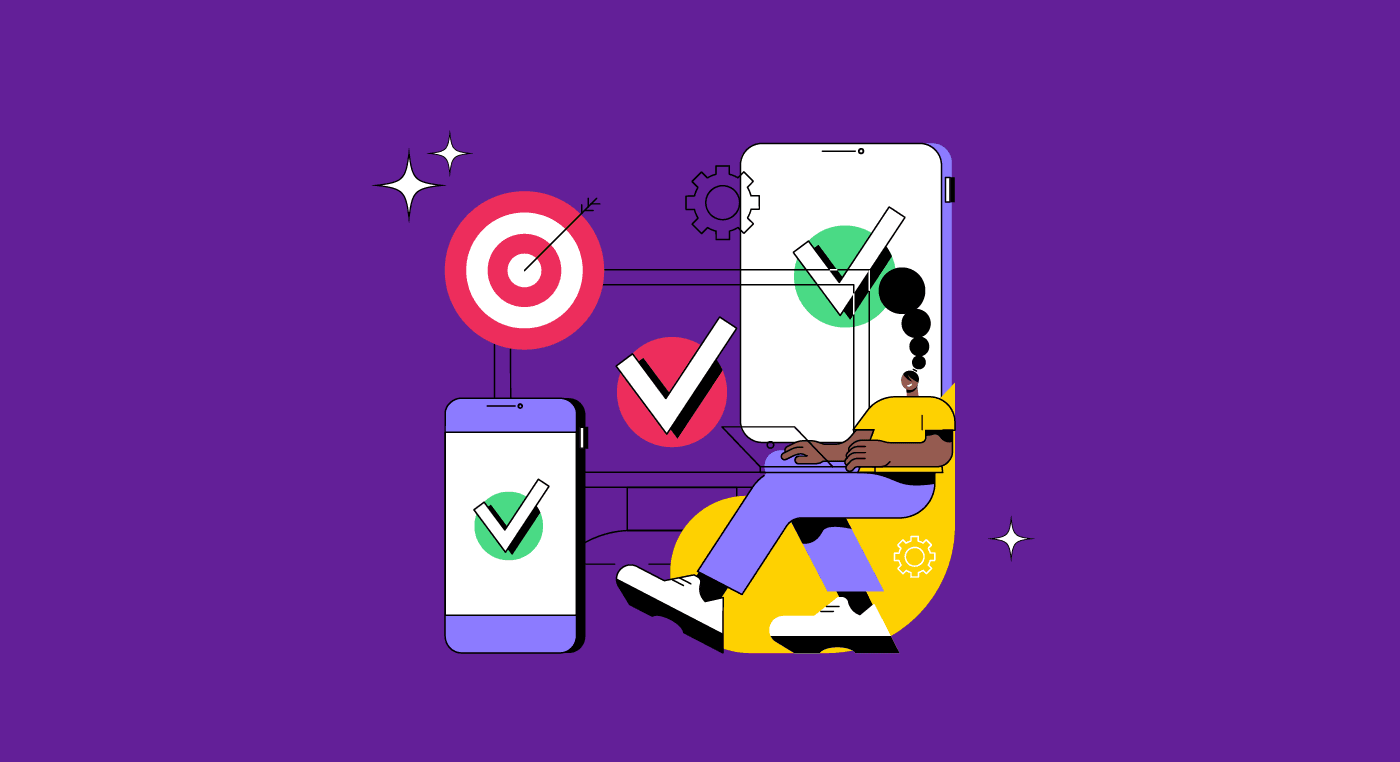What is a user journey map?
Mapping a user journey is fundamental in UX because it details the actions of users and how they feel during a particular experience with a product. This way, a journey map allows you to visualize the path users undergo to complete their tasks.
Every interaction can be translated into a story about the relationship between users and products. By defining a user journey, we can find all the contact points that users have with a product and assemble a story in which they are the protagonist.
In addition, once you visualize the entire user journey, you can better analyze the various distribution channels.
What does a journey map look like?

Notice that journey maps look different from one another. Still, they usually follow a similar format: a timeline embracing all contact points between a user and a product and the corresponding channels in which those interactions take place. Also, there should be a description of how users feel along the way.
To summarize, a journey map should feature the following elements:
- A specific user (persona);
- A particular scenario, including user goals and expectations;
- User actions and interactions and their corresponding emotional state (main touchpoints and all channels associated with each touchpoint);
- Insights and opportunities.
We’re going through the details of these elements further below. Remember that a journey map should always tell a story from the user’s perspective.
Reading tip: How To Create Valuable User Personas That Will Actually Matter?
Why is the user journey important?
The user journey map uses storytelling to promote visibility into the user’s perspective and how they interact with a product.
- Storytelling: a vivid description of user actions and experiences through a narrative that engages the audience;
- Visibility: it is transforming raw data into graphical information. This tool allows for more effective analysis, identifying outliers, trends, and patterns.
Therefore, a journey map is a powerful tool to identify opportunities and user pain points and gather insights faster.
Benefits of defining a user journey map
Mapping the user journey unravels a series of benefits, like:
Supports company goals
The user experience must be aligned with the company’s goals.
In this sense, good experiences affect organizations’ image, reputation, and even revenue.
The User Journey helps identify meaningful UX design opportunities that will positively impact a company’s business.
Alignment of goals
The Journey must be shared with the various stakeholders of the organization.
In this way, communication, understanding of the objectives, and the actions necessary to achieve them will be clear to all.
Alignment of objectives is essential so that there are no failures in communication or focus on actions that will not bring results for the company.
Promotes insights
The User Journey is a visual tool.
Therefore, it is much easier to identify the strengths and weaknesses of interaction.
The User Journey facilitates an interface analysis and creates insights so that the UX Design area can improve user experiences.
Facilitates communications between areas
The user’s journey helps communication between areas of the company because it is a shared document containing important information for the company.
Keeps users in focus
The journey map is about the experience of your target audience with your product.
Therefore, the user is your protagonist, and using it ensures that he never gets out of focus.
Brings awareness of employee impact on customers
The map makes it easier to visualize and understand the impacts of each person or area involved in the project.
Employees can see how their work directly or indirectly impacts the overall user experience.
This understanding and visibility increase team satisfaction and engagement.
User journey for adding value to your portfolio
The user journey map is part of the Product Designer’s routine and is essential for improving the user experience.
But the map can also be a helpful tool to improve and increase your UX Design portfolio.
In this sense, it will clearly illustrate the objectives for which that project was designed.
In addition, it will show your line of reasoning and problem-solving in the face of the gaps and opportunities mapped.
This is a way to demonstrate your skills rather than just showing the final results of the projects to the interviewer.
Many of our students use journey maps in their projects:
“It’s no use having just pretty screens. In UX it is very important to have the entire process as detailed as possible, explaining what your line of thought was to arrive at the final project.”- Luka Vasconcelos.

“It’s always important to detail the projects. Recruiters really want to know about your creation process and how you got to the final result.”- Barbara Niniz.

“In UX what matters most is how you arrived at a specific solution to the user’s problem, and not simply the final design. This is the best way to show companies how you think and that you are capable of delivering a design that actually works”- Amanda Damasceno.

Key elements of a user journey

Journey maps may vary in format, but there are a few components every user journey should detail:
1) Persona
The first step is gathering information from previous research to define the actor who experiences the journey.
This persona (and their point of view) will guide the journey and is the protagonist of the entire process.
Also, determine what the purpose of their journey is. What problem are they trying to solve?
2) Scenario + goal + expectations
Now it’s time to define the experience your persona will go through. Is it for an existing product or a future journey for a new product or service?
Make it very clear what is the user’s goal during this journey map, like a person who wants to make a car rental reservation, for example. Scenarios that describe a sequence of events like purchasing behavior are more suited for journey maps.
3) Actions, mindsets, and emotions
The essence of your narrative is based on what users feel and think along each action during the journey.
Remember that these elements should be based on data collected from qualitative research.
4) Contact point and channels
The map should point every time the user directly interacts with the company and where this communication occurs; through a website, mobile app, or a physical store, for example.
This sort of information is extremely valuable for pointing out brand inconsistencies and opportunities for improvement.
5) Insights and internal ownership
Finally, it’s time to add the insight your team gathered through the journey analysis.
The whole objective of mapping a user journey is to reveal the gaps in the current (or future) experience and turn the findings into actionable feedback to optimize the user experience.
Additionally, it is crucial to determine who is in charge of what in the user journey, for there will be clarity on the “owner” of each part of the process. Assigning ownership is a great way to ensure that the company can actually change the process.
Reading tip: How To Create Valuable User Personas That Will Actually Matter?

Extra tips to help you map a user journey
Mapping a journey is a collaborative process built from research with a defined goal. Check below a few tips for making sure that your team stays on the right track while creating a user journey:
- Rely on data: don’t make assumptions about user behavior. Add their actions, feelings, and thoughts based on actual research;
- Collaborate: the activity of journey mapping is usually the most valuable part of the process, so invite stakeholders and people from other areas to take part in the mapping process;
- Don’t skip steps: gather all the necessary information before building the map and check your facts, revising the journey.
- Engage others: make presentations and meetings to share results and promote engagement with the journey map.

Assess current-state experiences or define an ideal one?
A frequent question around the user journey is: should I use the map to evaluate a current experience or to build the ideal experience for the user?
The answer is simple: you can use it for both.
When evaluating a current experience for an existing product, the user journey will help uncover inconsistencies and gaps in the user experience. To map this journey, gather all relevant information about how the user interacts with your product and company.
On the other hand, if you are designing an ideal experience for a new product, it is essential to evaluate your competition. This way, you can identify how your product can stay ahead of competitors.
In this case, it is common to create two journeys: the ideal journey before launch and the Real Journey after launch.








